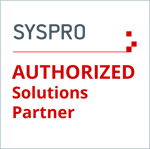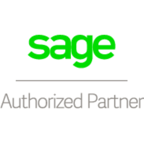Your order fulfillment process can make or break the sale. Here’s why: customers feel the “Amazon effect.” They’re used to lightning-fast delivery, tracking that practically tells you what block your package is on (never mind what day it will arrive), and more. When you streamline your order fulfillment process, you’re not just keeping up with the Joneses, fulfillment-style, you’re paving the way for repeat business. Here’s why streamlining your order fulfillment process is one of the best things you can do for your business.
Measuring the Order Fulfillment Process
Most companies follow a similar order fulfillment process: receive the order, pick/pack, and ship. Depending on how automated your system is, you may send notifications to the customer at every stage of this process or just at key points in it, like when the order ships. Most companies also offer tracking through their shipper, like UPS or FedEx, and provide updates via email or text.
There’s a group called the Association for Supply Chain Management’s Supply Chain Operations Reference (SCOR) that created a model to help businesses measure the effectiveness of their order fulfillment process. Here are their seven points to watch to make sure you’re on your game:
- Orchestrate
- Plan
- Order
- Source
- Transform
- Fulfill
- Return
The SCOR model provides metrics (numbers) that you can use to assess supply chain performance. They base their scoring on reliability, responsiveness, agility, cost, profit, asset management, environmental, and social attributes.
Let’s face it, though—the goal of your order fulfillment process isn’t to save the environment (although it’s nice when companies do their best). Your goal is to get products out the door as quickly as you can while keeping costs low. The faster people get their products, the happier they are with your company. The lower the cost, the happier you are, because your margin is better. It’s that simple.
If you want to measure your performance, the SCOR model does help you benchmark your company in several areas that matter. Give it a shot and see how you “score.”
Say Goodbye to Bottlenecks: ERP for Smarter Order Handling
Enterprise resource planning (ERP) software can help remove bottlenecks in your order fulfillment process and pave the way for faster, better fulfillment. Here’s how it works.
Automated Processing = Fewer Mistakes
An ERP receives and processes orders from your call center, website, or sales portal. It automates the process from order entry through invoicing and payment processing. Because you aren’t typing into the system at every step, it minimizes mistakes. Hey, we all make them. But when the system takes your initial input and runs it through, it eliminates extra keying that can lead to pesky typos.
Managing Suppliers
If managing suppliers seems to take way too much time, you’re in luck - an ERP can give you back hours in your day. An ERP system can help manage the process of sourcing items from suppliers. On delivery at the warehouse, it can automate counting and inspecting to ensure that you received what they in the system as in stock, making it easier for everyone on the team to look them up and answer customer questions.
Save the Crystal Ball - Improve Demand Forecasting with Data
Don’t be embarrassed if demand forecasting seems more like guesswork than not. Many companies start there, but you don’t have to remain there. An ERP system can help you predict and plan for demand levels in order to keep the right amount of items in stock without creating pesky under- or over-stocking.
Accurate Inventory Management
You can’t make money if you can’t ship products, and you can’t ship products if they aren’t in stock. An ERP system can help the order fulfillment process by providing you with up-to-the-minute stock counts. This way, if the customer asks for 10 widgets, you can tell them immediately, “10 it is!” with confidence and get the order out the door.
Manufacturing Integration
ERPs can do more than track orders and supplies. They can also be integrated into your manufacturing and assembly systems so that you have a full 360-degree picture of operations. There are production planning and monitoring tools built in as well, which help you optimize the whole process of putting products together. When integrated with inventory management and order processing, the sky’s the limit as to what you can do with the data. It’s going to wow you with its depth and breadth.
Know Where the Package Is: Real-time Visibility into Order Tracking
Track packages and know exactly where it is from your front door to your customer’s front door. Your ERP system can provide shipping information from your transportation partners that provides accurate information on where each package is in transit.
Streamlined Picking and Packing
When a product is ready for delivery, an ERP system can streamline the process of picking the correct items from the warehouse using a variety of picking strategies. The ERP system can also help to optimize the packing of items to lower shipping costs and make transport more efficient.
Process Returns Quickly
Customers judge a business not just by its products and fast shipping, but by how well it handles returns. When the return process is smooth as silk, even a disappointed customer won’t be too sad. The typical returns processing procedures involve quality control checks and sorting returned products accordingly. Returned products are then returned to a vendor for a distributor refund or credit. Your ERP system can help you track returns and ensure items that are salable are returned to inventory.
Order Fulfillment Is a Critical Process for Your Business
As you can see, when your order fulfillment process hums along, everyone is happy: you, your suppliers, and your customers.
One way to support an effective fulfillment process is through the right ERP system. It will help in all areas of fulfillment from the sale to the receipt of the package.
And you know what? When your customers are happy, they come back for more. Improving the order fulfillment process isn’t really a cost. It’s a healthy investment in your business.
Hey! Check This Webinar Out!
Are you curious about how your team can build stronger relationships with your customers—and increase repeat business in the process? We invite you to click this link for access to a webinar that will explain how to increase repeat business with improved customer service.
PositiveVision
Positive Vision is an experienced ERP vendor with experience helping organizations improve their supply chain processes. We would be happy to assist you in choosing the right ERP for your business and ensuring that its launch is smooth and effective. Contact us to speak to one of our product experts about a customized solution today.




 © 2019 PositiveVision • 219 E. Thorndale Ave. Roselle, IL 60172
© 2019 PositiveVision • 219 E. Thorndale Ave. Roselle, IL 60172